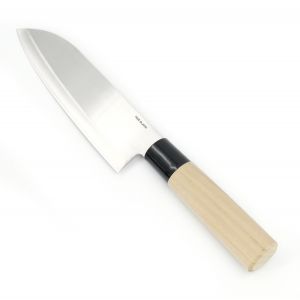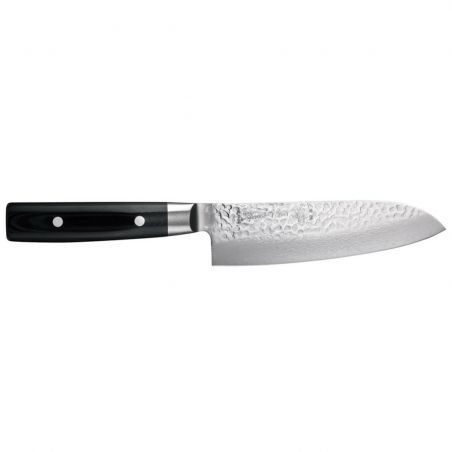Japanese kitchen knife for all types of food, SANTOKU, 17cm
| Blade length | 17 cm |
|---|---|
| Product origin | Made in Japan |
| Dishwasher safe | no |
| Production region | Seki - Gifu Prefecture |
| kind of steel | Acier inoxydable |
| Composition of the handle | bois d'hinoki, polypropylène |
| Compositions | steel |
Delivery times:
- 2 to 4 business days for France, Belgium, and Switzerland.
- 3 to 6 business days for other European countries.
- 5 to 9 business days for Overseas Territories (DOM-TOM), Canada, and other countries.
This item is shipped from our warehouse in France. More details about shipping by clicking here.
The Japanese are the undisputed masters of retailing and peeling both by the quality of their knives and their know-how.
In addition to the traditional and popular bo-cho- knife very sharp triangular blade with a notch at right angles to the handle, there are various knives used by the masters sushi, among others, in Japanese cuisine, including Le santoku bocho is a light triangular knife for cutting vegetables.
Japanese knives are very sharp, so do not leave them within the reach of children.
Never put your knives in the dishwasher, very aggressive products and heat damage the special alloy as well as the wooden handle, wash the knife by hand for long time use.
Do not try to slice bones or other hard things. For that, take more appropriate instruments.
The design of our knives
The Japanese prefecture of Niigata has always been a hotbed of ancient metalworking in Japan, especially the Tsubame-Sanjo region, named after the two towns that make up the region.
The local history of metalworking originates in the Igarashi riverbed that runs through Sanjo: it was here that iron particles were discovered eight hundred years ago.
The particularity of Japanese knives is their specific alloy of carbon steel forged with boric acid, giving their blade the hardness that makes them famous throughout the world.
Creating each of these pieces in accordance with tradition requires time, but also many steps. Elles nécessitent de maîtriser des compétences manuelles sont transmises de génération en génération.









































































